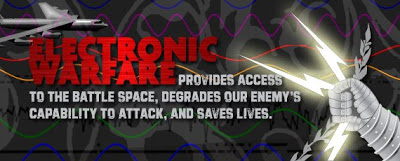When this happens, we can all feel safe at last.
Roger Baker / The Rag Blog
Air Force Aims for ‘Full Control’ of ‘Any and All’ Computers
By Noah Shachtman May 13, 2008
The Air Force wants a suite of hacker tools, to give it “access” to — and “full control” of — any kind of computer there is. And once the info warriors are in, the Air Force wants them to keep tabs on their “adversaries’ information infrastructure completely undetected.”
The government is growing increasingly interested in waging war online. The Air Force recently put together a “Cyberspace Command,” with a charter to rule networks the way its fighter jets rule the skies. The Department of Homeland Security, Darpa, and other agencies are teaming up for a five-year, $30 billion “national cybersecurity initiative.” That includes an electronic test range, where federally-funded hackers can test out the latest electronic attacks. “You used to need an army to wage a war,” a recent Air Force commercial notes. “Now, all you need is an Internet connection.”
On Monday, the Air Force Research Laboratory introduced a two-year, $11 million effort to put together hardware and software tools for “Dominant Cyber Offensive Engagement.” “Of interest are any and all techniques to enable user and/or root level access,” a request for proposals notes, “to both fixed (PC) or mobile computing platforms… any and all operating systems, patch levels, applications and hardware.” This isn’t just some computer science study, mind you; “research efforts under this program are expected to result in complete functional capabilities.”
Unlike an Air Force colonel’s proposal, to knock down enemy websites with military botnets, the Research Lab is encouraging a sneaky, “low and slow” approach. The preferred attack consists of lying quiet, and then “stealthily exfiltrat[ing] information” from adversaries’ networks.
But, in the end, the Air Force wants to see all kinds of “techniques and technologies” to “Deceive, Deny, Disrupt, Degrade, [or] Destroy” hostile systems. And “in addition to these main concepts,” the Research Lab would like to see studies into “Proactive Botnet Defense Technology Development,” the “reinvent[ion of] the network protocol stack” and new antennas, based on carbon nanotubes.
raditionally, the military has been extremely reluctant to talk much about offensive operations online. Instead, the focus has normally been on protecting against electronic attacks. But in the last year or so, the tone has changed — and become more bellicose. “Cyber, as a warfighting domain . . . like air, favors the offense,” said Lani Kass, a special assistant to the Air Force Chief of Staff who previously headed up the service’s Cyberspace Task Force. “If you’re defending in cyber, you’re already too late.”
“We want to go in and knock them out in the first round,” added Lt. Gen. Robert Elder, commander of the 8th Air Force, which focuses on network issues.
“An adversary needs to know that the U.S. possesses powerful hard and soft-kill (cyberwarfare) means for attacking adversary information and command and support systems at all levels,” a recent Defense Department report notes. “Every potential adversary, from nation states to rogue individuals… should be compelled to consider… an attack on U.S. systems resulting in highly undesireable consequences to their own security.”
Source. / Wired
Also see Secret Cybersecurity Plans / Wired
The Rag Blog


















